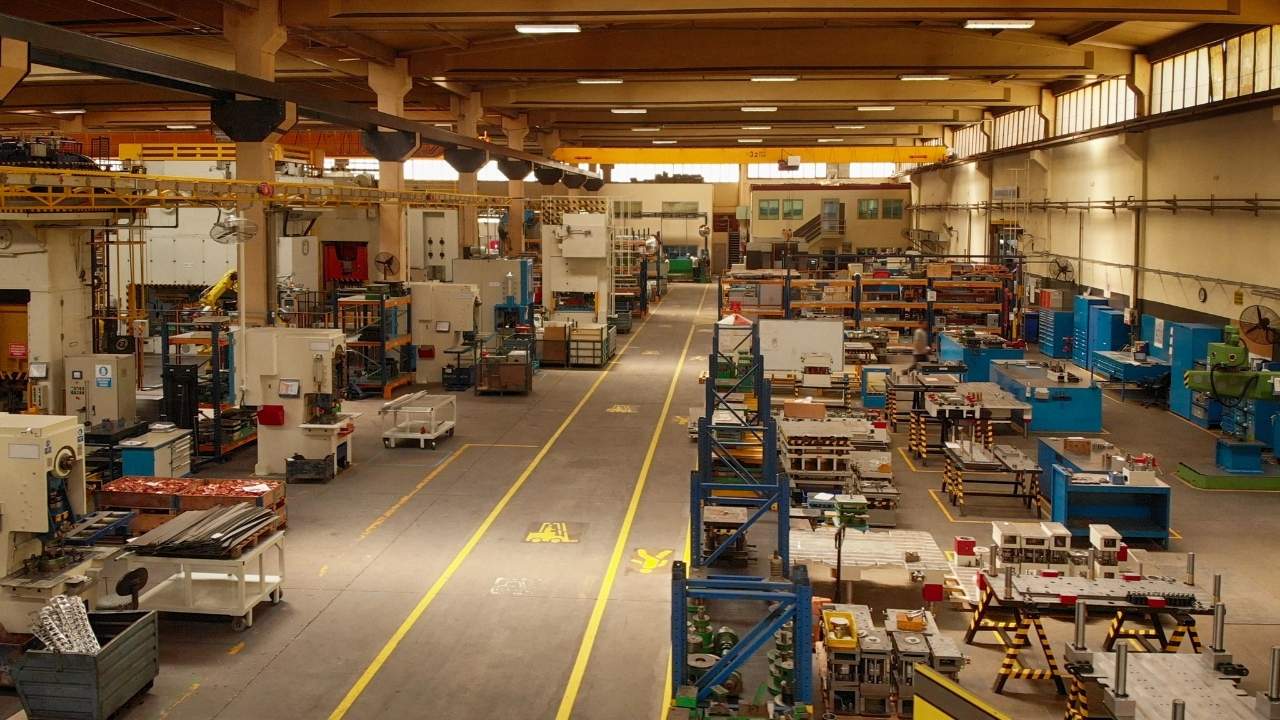Apparel production planning in the dynamic and fast-paced world of fashion involves managing materials, production schedules, and supply chain logistics, which can be incredibly challenging. Traditional methods of Material Requirements Planning (MRP) often fall short, leading to inefficiencies, delays, and increased costs. However, the advent of Enterprise Resource Planning (ERP) systems has revolutionized the way fashion companies handle these complexities. By integrating all facets of production and resource management into a single, cohesive system, ERP solutions offer a comprehensive approach to overcoming the unique challenges faced by the apparel and fashion industry.
Optimizing Productivity with Apparel ERP
The global apparel industry operates in a highly dynamic environment with evolving fashion trends, rising customer expectations, and compressed product lifecycles. Managing material and production planning manually in such a setting becomes exceedingly complex for manufacturers. Challenges in demand forecasting, procurement, inventory management, and production scheduling often result in delayed orders, excess stocks, quality issues, and escalating costs.
Apparel ERP software provides an integrated digital platform to streamline these core operational processes through automation and real-time data visibility. By facilitating collaboration across internal teams and external partners on a single system, ERP optimizes planning, purchasing, and manufacturing activities. This enables apparel businesses to scale operations efficiently while improving profitability.
Understanding Material Requirements Planning (MRP)
MRP is a pivotal production planning methodology that determines precise material needs based on sales forecasts, bill of materials (BOM) structures and current inventory levels. It helps minimize shortages and overstocking.
In apparel ERP, MRP commences with demand forecasting modules that analyze historical sales patterns, market trends, seasonality factors, and more to project requirements accurately weeks or months in advance. Powerful forecasting algorithms account for uncertainties and adjust projections continuously.
BOM management functionality captures the composition and structure of all finished goods and sub-assemblies in detail. It establishes traceable links between parent items and their constituent raw materials and components.
By linking sales projections to BOM data and real-time inventory levels, ERP automatically calculates precise material quantities needed for production. Shortfalls are identified, and purchase requisitions are created to initiate automated procurement workflows.
Real-time inventory monitoring prevents over-ordering and helps optimize reorder points. Supplier portals facilitate collaboration, while procurement dashboards provide end-to-end visibility. This streamlined process ensures uninterrupted material flow.
Optimizing Production Planning and Scheduling
Production planning schedules manufacturing activities optimally to fulfill customer orders on time while meeting quality standards. Apparel ERP enhances this function through integrated capacity planning, shop floor control, and quality management.
Capacity requirements planning matches available production resources like labor hours, machinery capacity, and facility space to the master schedule. It generates optimized short-term production schedules factoring machine capabilities and priority rules.
Shop floor modules provide real-time visibility into work-in-progress quantities, bottleneck areas, and labor efficiency from any device. Managers can remotely monitor progress and make data-backed decisions to smooth operations.
Quality modules help integrate inspection, testing, and compliance procedures to guarantee product quality. Traceability features provide end-to-end order visibility for accountability.
Powerful reporting dashboards analyze historical planning and scheduling performance to identify areas for continuous improvement. Over time, they help optimize resource allocation, throughput, and overall equipment effectiveness.
Boosting Operational Efficiency and Profitability
Accurate demand forecasting and automated procurement using MRP eliminate overstocking, shortages, and unnecessary rush orders from vendors. Precise BOM management and real-time inventory tracking minimize waste.
Streamlined production workflows improve resource utilization, throughput, and capacity optimization. Integrated quality control enhances yields. All these factors boost productivity and lower costs.
With reliable fulfillment, customer satisfaction increases, driving repeat sales. This translates to higher profitability. Additionally, agile planning helps manufacturers adapt quickly to shifting market trends and demands.
Scalability and Collaboration
Apparel ERP supports flexible planning to react nimbly based on demand signals. Its collaborative workflows facilitate coordination across global manufacturing networks, suppliers, agents, and retailers.
Cloud deployment provides universal access to critical data from any location. Powerful reporting and analytics derive actionable insights from vast operational datasets. Managers gain holistic performance visibility for strategic decision-making.
As business scales, ERP systems scale elastically with automated processes and rules-based workflows. Their integrated nature streamlines formerly disjointed functions into a cohesive whole for accelerated growth.
Core Modules for and Production Planning in the Apparel Industry
Fashion ERP systems incorporate several core modules that apparel manufacturers must evaluate carefully to ensure optimal MRP and production planning.
Demand Forecasting – Sophisticated statistical algorithms analyze time-series patterns in historical sales data, factoring economic indicators and market intelligence. Integrated forecasting allows consensus demand projections with suppliers. Scenario modeling aids strategic decision-making.
Inventory Optimization – Real-time visibility into stock levels across multiple warehouses streamlines replenishment. Features like lot tracking, expiry dates, and serial numbers support traceability and asset management. Automated re-order points and alerts prevent stockouts or excess stock.
BOM Configuration – Structured product structures capture each item’s composition and cost breakdown in granular detail. Revision control maintains version history. ‘Where-used’ analysis identifies impacted designs for change propagation. Alternate BOMs accommodate material substitutions.
Production Scheduling – Intuitive load-leveling tools graphically assign work orders to machines and work centers based on available hours and sequencing rules. Forward and backward scheduling options provide flexibility. Capacity requirements planning matches resources to demand. Simulation testing evaluates plan feasibility.
Shop Floor Management – Digital workflows replace paper-based tasks on the factory floor. Mobile apps facilitate real-time WIP tracking, time & attendance integration, and quality inspection. Performance dashboards provide oversight of delays, rejections, and line efficiencies for continuous improvement.
Analytics and Reporting – Role-specific KPI-based dashboards deliver actionable insights into production performance. The drill-down analysis identifies the root causes of variances in fact-based problem-solving. Modeling and ‘what-if’ scenarios support strategic capacity and sourcing decisions.
A fashion ERP addressing all these critical components comprehensively drives optimized MRP and manufacturing operations.
Benefits of Optimizing with Apparel ERP
Boosted Profitability
Forecasting accuracy curtails overproduction and helps manage raw material quantities economically. Seamless information flow enables bulk procurement discounts from approved vendors. Optimized scheduling maximizes resource utilization of machinery and manpower. Reliable scheduling and shorter cycle times further satisfaction of wholesale customers, expediting payments.
Scalability
Dynamic forecasting accommodates scaling production swiftly as per demand fluctuations. Cloud deployment guarantees accessibility from any location. Improved collaboration supports outsourcing decisions and managing geographically dispersed units and supplier networks ably.
Sustainability
Accurate MRPII precludes over-procurement, reducing carbon footprint. Real-time inventory transparency lessens product lifecycle wastage. BOM standardization and digital approvals quicken design changes reducing sample wastage. Industry 4.0-ready systems ensure future-proofing investments.
Addressing User Needs
Designers – Flexible BOMs allow for evaluating material variations and costs nimbly for informed designing. Production status in real-time aids in fast decision-making.
Planners – Capacity planning considers multiple constraints and bottlenecks proactively. Automated scheduling avoids overproduction.
Procurement – A centralized vendor database supports bulk sourcing economically. Auto-raised purchase orders expedite material inflows.
Inventory Managers – Demand-sensing stocking algorithms help optimum inventory levels. Integrated put-away/picking enhances warehouse productivity.
Managers – Dashboards offer KPI-based oversight into efficiencies and OTIF deliveries across plants. Cost-savings are quantified.
Owners – Business intelligence aids strategic analysis and expansion decisions data-driven. Investments are optimized.
Embracing Sustainability through ERP in Production Planning in the Apparel Indsutry
Apparel ERP helps achieve sustainability goals through optimized planning and visibility. Accurate forecasting and flexible scheduling reduce overproduction. Real-time data supports lean practices that minimize defects and scrap.
Integrated quality control enhances compliance with environmental standards. Traceability features promote ethical sourcing and compliance. Dashboards provide transparency into resource consumption for reduction initiatives.
Collaboration with suppliers improves demand signal timeliness, avoiding rushed orders that increase carbon footprint. Overall, ERP streamlines operations for reduced waste and lower environmental impact.
Achieve Production Planning Excellence in the Apparel Industry with Versa Cloud ERP
As discussed, optimizing MRP and production planning is critical for fashion businesses seeking to boost efficiency, reduce costs, and deliver exceptional customer experiences. However, the right technology partner is crucial to fully realize these benefits. Versa Cloud ERP provides a comprehensive solution tailored to fashion manufacturing needs. Key highlights include:
- Accurate Unified real-time data to improve planning
- Optimized inventory with multi-warehouse tracking and automatic reordering
- Efficient production scheduling with drag-and-drop calendar planning
- Shop floor control via digital work orders, barcode scanning, and touchscreen time tracking
- Quality management through inspection workflows and full traceability
- Powerful analytics providing real-time insights into all operations
- Easy third-party logistics integration for collaborative warehouse and order fulfillment
With Versa, fashion businesses can optimize inventory, production, and supply chain workflows on a unified cloud platform. Users across the organizational hierarchy gain access to relevant information and tools through role-based apps and dashboards.To learn more about transforming fashion manufacturing, schedule a free demo of Versa Cloud ERP today. See firsthand how leading fashion brands are leveraging Versa to achieve production excellence
FAQ’s
Q: How can fashion manufacturers improve material requirements planning?
Accurate demand forecasting, real-time inventory visibility across the supply chain, structured BOM management and automated purchase order generation can help optimize MRP.
Q: What are some best practices for production planning and scheduling in the apparel Industry?
Clearly defined routing, optimized resource allocation, efficient load scheduling, balanced work dispatching, real-time monitoring and continuous analysis are key for excellence in production planning.
Q: How does quality management integrate with production workflows?
Inspection checklists, shop floor instructions, and full traceability in ERP systems enable better quality control during production. Issues can be identified and addressed faster.
Q: What KPIs are important for monitoring production performance?
Key metrics include cycle time, on-time delivery, capacity utilization, overall equipment effectiveness (OEE), work-in-progress, scrap/rework rate and schedule compliance.
Q: How can fashion manufacturers enable flexibility and agility in production?
Capabilities like multiple routing options in BOMs, capable-to-promise analysis, rapid re-scheduling, and virtual production modeling in ERP systems enable manufacturers to be more responsive.
Q: What technologies are shaping the future of fashion manufacturing?
Artificial intelligence, machine learning, Industrial IoT, augmented reality, additive manufacturing, and blockchain will transform efficiency, transparency, and sustainability across fashion supply chains.
ERP systems are fundamental to the efficient management of a modern supply chain in the manufacturing sector. By integrating various business processes, ERP systems streamline operations, enhance visibility, and improve decision-making, making them indispensable tools for manufacturers aiming to stay competitive in today’s market.
Empower your business with the knowledge to navigate the realm of an Integrated ERP solution, specifically tailored to your business needs. Gain insights, streamline processes, and propel your financial management to new heights with this comprehensive guide
With Versa Cloud ERP’s Implementation guide learn how a business can ensure a successful ERP Solution Implementation. Navigate the complexities of implementation with confidence!
Effectively manage your financials, accounting, inventory, production, and warehouse management workflows with our award-winning ERP.
Let Versa Cloud Erp’s do the heavy lifting for you.
[widget id=”custom_html-40″]
[widget id=”custom_html-42″]
[widget id=”custom_html-30″]
Do Business on the Move!
Make your businesses hassle-free and cut the heavyweights sign up for the Versa Cloud ERP today!!
Join our Versa Community and be Future-ready with us.






